Apollo 9
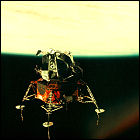 Apollo 9 lifts off on a ten-day mission to test the first lunar lander, but only in Earth orbit. Jim McDivitt and Rusty Schweickart put the lunar module, nicknamed Spider, through its paces, while David Scott mans the command module Gumdrop. This is the first flight of the completely non-aerodynamic lunar module, and various docking maneuvers and spacewalk scenarios are practiced. The crew returns to Earth in the Apollo command module, while Spider is left in a low orbit which decays two weeks later, allowing it to disintegrate in Earth’s atmosphere.
Apollo 9 lifts off on a ten-day mission to test the first lunar lander, but only in Earth orbit. Jim McDivitt and Rusty Schweickart put the lunar module, nicknamed Spider, through its paces, while David Scott mans the command module Gumdrop. This is the first flight of the completely non-aerodynamic lunar module, and various docking maneuvers and spacewalk scenarios are practiced. The crew returns to Earth in the Apollo command module, while Spider is left in a low orbit which decays two weeks later, allowing it to disintegrate in Earth’s atmosphere.
This mission is dramatized in the Spider episode of HBO’s 1998 series From The Earth To The Moon.
Soyuz 5: almost another space disaster
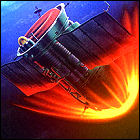 The Soviet Union launches a three-man crew aboard Soyuz 5, which docks in orbit with the already-launched Soyuz 4 – the first two crewed spacecraft to accomplish this feat. The Soyuz 5 crew consists of cosmonauts Boris Volynov, Alexei Yeliseyev and Yevgeny Khrunov, but only Volynov makes the return journey aboard Soyuz 5, as his crewmates board Soyuz 4 via spacewalk. It’s probably just as well for them: after three days in orbit, Soyuz 5 begins its descent to Earth, but the failure of explosive bolts meant to separate the re-entry capsule from the rest of the vehicle fail. To maintain some semblence of a survivable aerodynamic profile, Volynov flies Soyuz 5 in nose-first – one of the riskiest re-entries in the history of human spaceflight, since the nose of the capsule is not covered by any heat shielding. The vehicle separates just before the stress of re-entry would have destroyed it, but then its parachutes fail to completely deploy, resulting in a punishingly jarring but non-fatal landing, hard enough to break Volynov’s teeth.
The Soviet Union launches a three-man crew aboard Soyuz 5, which docks in orbit with the already-launched Soyuz 4 – the first two crewed spacecraft to accomplish this feat. The Soyuz 5 crew consists of cosmonauts Boris Volynov, Alexei Yeliseyev and Yevgeny Khrunov, but only Volynov makes the return journey aboard Soyuz 5, as his crewmates board Soyuz 4 via spacewalk. It’s probably just as well for them: after three days in orbit, Soyuz 5 begins its descent to Earth, but the failure of explosive bolts meant to separate the re-entry capsule from the rest of the vehicle fail. To maintain some semblence of a survivable aerodynamic profile, Volynov flies Soyuz 5 in nose-first – one of the riskiest re-entries in the history of human spaceflight, since the nose of the capsule is not covered by any heat shielding. The vehicle separates just before the stress of re-entry would have destroyed it, but then its parachutes fail to completely deploy, resulting in a punishingly jarring but non-fatal landing, hard enough to break Volynov’s teeth.
Similar malfunctions will plague a pair of Soyuz vehicles returning from the International Space Station in 2007. Soyuz 5 is the final crewed Soviet flight prior to the moon landing.
Soyuz 4: first manned space docking
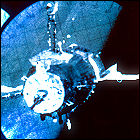 With only cosmonaut Vladimir Shatalov aboard, the Soviet Union launches Soyuz 4 into Earth orbit. Another manned vehicle, Soyuz 5, is launched the next day, and the two vehicles dock in orbit, the first docking of two manned spacecraft. Alexei Yeliseyev and Yevgeny Khrunov perform a spacewalk to leave Soyuz 5 and board Soyuz 4 for the return home (though the two capsules have primitive docking hardware, they do not have a docking tunnel or airlocks). Soyuz 4 makes a safe landing after two days in orbit – which is more than can be said for its sister ship.
With only cosmonaut Vladimir Shatalov aboard, the Soviet Union launches Soyuz 4 into Earth orbit. Another manned vehicle, Soyuz 5, is launched the next day, and the two vehicles dock in orbit, the first docking of two manned spacecraft. Alexei Yeliseyev and Yevgeny Khrunov perform a spacewalk to leave Soyuz 5 and board Soyuz 4 for the return home (though the two capsules have primitive docking hardware, they do not have a docking tunnel or airlocks). Soyuz 4 makes a safe landing after two days in orbit – which is more than can be said for its sister ship.
Live From The Moon
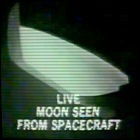 Broadcasting live black & white television pictures from lunar orbit on Christmas Eve, the crew of Apollo 8 delivers one of the most-watched broadcasts of 1968. As the surface of the moon rolls silently outside the windows of their command/service module, the astronauts take turns reading the first chapter of Genesis, dedicating it to “all of you on the good Earth.” After ten orbits of the moon, Apollo 8 fires its engine, putting it on a return trajectory to Earth; it splashes down safely three days later.
Broadcasting live black & white television pictures from lunar orbit on Christmas Eve, the crew of Apollo 8 delivers one of the most-watched broadcasts of 1968. As the surface of the moon rolls silently outside the windows of their command/service module, the astronauts take turns reading the first chapter of Genesis, dedicating it to “all of you on the good Earth.” After ten orbits of the moon, Apollo 8 fires its engine, putting it on a return trajectory to Earth; it splashes down safely three days later.
This mission is dramatized in the 1968 episode of HBO’s 1998 series From The Earth To The Moon.
Apollo 8
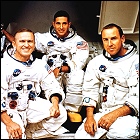 Moved ahead in the schedule due to ongoing difficulties with the construction of the lunar module, Apollo 8 lifts off from Cape Canaveral on a mission that represents NASA’s biggest gamble yet in the race for the moon: on only the second manned Apollo flight, astronauts Frank Borman, Jim Lovell and Bill Anders will go to the moon, orbit it in their command/service module, and return to Earth (the lunar module is still in the late stages of development). Mission planners plot out a free return trajectory – ensuring that without engines, Apollo 8 could loop around behind the moon and swing back toward home.
Moved ahead in the schedule due to ongoing difficulties with the construction of the lunar module, Apollo 8 lifts off from Cape Canaveral on a mission that represents NASA’s biggest gamble yet in the race for the moon: on only the second manned Apollo flight, astronauts Frank Borman, Jim Lovell and Bill Anders will go to the moon, orbit it in their command/service module, and return to Earth (the lunar module is still in the late stages of development). Mission planners plot out a free return trajectory – ensuring that without engines, Apollo 8 could loop around behind the moon and swing back toward home.
This mission is dramatized in the 1968 episode of HBO’s 1998 series From The Earth To The Moon.
Soyuz 3
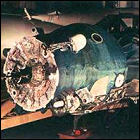 The Soviet Union resumes its manned space program with the launch of cosmonaut Georgy Beregovoy aboard the redesigned Soyuz 3 vehicle. The unmanned Soyuz 2 is launched the day before to serve as a docking target for Soyuz 3, but while the two vehicles pass close to each other, no docking is achieved. Beregovoy successfully returns to Earth – the first Soyuz cosmonaut to do so – after four days in orbit.
The Soviet Union resumes its manned space program with the launch of cosmonaut Georgy Beregovoy aboard the redesigned Soyuz 3 vehicle. The unmanned Soyuz 2 is launched the day before to serve as a docking target for Soyuz 3, but while the two vehicles pass close to each other, no docking is achieved. Beregovoy successfully returns to Earth – the first Soyuz cosmonaut to do so – after four days in orbit.
Apollo 7
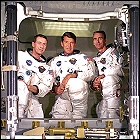 After a year of redesign and reorganization, NASA resumes manned flights with Apollo 7, the first of the successful Apollo flights. An 11-day Earth-orbit shakedown cruise for the Apollo command/service module, the mission becomes contentious when the three-man crew – Wally Schirra, Walt Cunningham and Donn Eisele – is loaded down with a jam-packed mission plan. Worse, Schirra comes down with a cold which quickly spreads to his crewmates in the enclosed biosphere of the Apollo command module. The flight’s technical goals are met with flying colors, though the crew’s snippy responses to ground controllers keep them off the crew rotation for future Apollo flights.
After a year of redesign and reorganization, NASA resumes manned flights with Apollo 7, the first of the successful Apollo flights. An 11-day Earth-orbit shakedown cruise for the Apollo command/service module, the mission becomes contentious when the three-man crew – Wally Schirra, Walt Cunningham and Donn Eisele – is loaded down with a jam-packed mission plan. Worse, Schirra comes down with a cold which quickly spreads to his crewmates in the enclosed biosphere of the Apollo command module. The flight’s technical goals are met with flying colors, though the crew’s snippy responses to ground controllers keep them off the crew rotation for future Apollo flights.
Apollo 4: Saturn V’s first flight
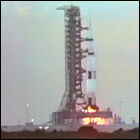 As questions over the safety of the Apollo spacecraft continue to rage, NASA performs the first “all-up” test of the Saturn V rocket with an unmanned launch officially designated Apollo 4. Unsure of what to expect, onlookers and press are stunned by the roar of the five huge F-1 engines; the vibrations cause CBS news anchor Walter Cronkite’s broadcast booth to partially collapse while he’s on the air – over three miles away. The entire vehicle performs flawlessly, propelling the empty (but active) Apollo command/service module to a distance of 10,000 miles before commanding it to return to Earth, simulating the speed and return angle of a vehicle returning from the moon.
As questions over the safety of the Apollo spacecraft continue to rage, NASA performs the first “all-up” test of the Saturn V rocket with an unmanned launch officially designated Apollo 4. Unsure of what to expect, onlookers and press are stunned by the roar of the five huge F-1 engines; the vibrations cause CBS news anchor Walter Cronkite’s broadcast booth to partially collapse while he’s on the air – over three miles away. The entire vehicle performs flawlessly, propelling the empty (but active) Apollo command/service module to a distance of 10,000 miles before commanding it to return to Earth, simulating the speed and return angle of a vehicle returning from the moon.
Soyuz 1: cosmonaut down
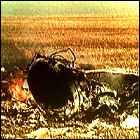 After a day in space aboard a spacecraft crawling with technical glitches, cosmonaut Vladimir Komarov orients the Soyuz 1 capsule for return to Earth. Though the vehicle survives reentry through Earth’s atmosphere, the main parachute fails to open, and the first Soyuz capsule returns to Earth at a speed of well over 100 miles per hour, killing Komarov instantly. The Soviet Union’s space program is stalled – much like the American Apollo program, postponed after the fatal Apollo 1 fire – well into 1968 as a result of the need to redesign Soyuz from the inside out.
After a day in space aboard a spacecraft crawling with technical glitches, cosmonaut Vladimir Komarov orients the Soyuz 1 capsule for return to Earth. Though the vehicle survives reentry through Earth’s atmosphere, the main parachute fails to open, and the first Soyuz capsule returns to Earth at a speed of well over 100 miles per hour, killing Komarov instantly. The Soviet Union’s space program is stalled – much like the American Apollo program, postponed after the fatal Apollo 1 fire – well into 1968 as a result of the need to redesign Soyuz from the inside out.
Soyuz 1
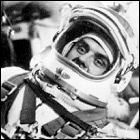 The first flight of the Soviet Union’s new manned space vehicle, Soyuz 1, lifts off from the Baikonur Cosmodrome. Though designed to accomodate a crew of three – and intended to be the answer to NASA’s Apollo command/service module in the ongoing race to reach the moon – the first Soyuz is flown by test pilot (and close friend of Yuri Gagarin) Vladimir Komarov. Though early plans for the mission involve a rendezvous and docking with a second Soyuz, only one vehicle is available for the mission, and it suffers a series of technical problems. Though aware of the faults in the Soyuz design, engineers have been pressured to put a manned Soyuz in orbit for political reasons.
The first flight of the Soviet Union’s new manned space vehicle, Soyuz 1, lifts off from the Baikonur Cosmodrome. Though designed to accomodate a crew of three – and intended to be the answer to NASA’s Apollo command/service module in the ongoing race to reach the moon – the first Soyuz is flown by test pilot (and close friend of Yuri Gagarin) Vladimir Komarov. Though early plans for the mission involve a rendezvous and docking with a second Soyuz, only one vehicle is available for the mission, and it suffers a series of technical problems. Though aware of the faults in the Soyuz design, engineers have been pressured to put a manned Soyuz in orbit for political reasons.
Apollo 1
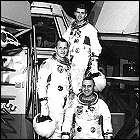 During a ground test of the Apollo 1 spacecraft, a fire breaks out in the 100% oxygen atmosphere of the Apollo capsule, leaving the crew – Virgil “Gus” Grissom, Ed White and Roger Chaffee – unable to operate or open the hatch. The searing heat burns through their oxygen hoses, suffocating the three astronauts in short order. Months of investigations and accusations follow, leading to changes of management at both NASA and North American Aviation, the aerospace company contracted to build the Apollo command/service module. Extensive redesign of the Apollo vehicle follows, including a switch to a nitrogen/oxygen atmosphere and a complete rethink of the hatch, and manned flights won’t resume until late 1968.
During a ground test of the Apollo 1 spacecraft, a fire breaks out in the 100% oxygen atmosphere of the Apollo capsule, leaving the crew – Virgil “Gus” Grissom, Ed White and Roger Chaffee – unable to operate or open the hatch. The searing heat burns through their oxygen hoses, suffocating the three astronauts in short order. Months of investigations and accusations follow, leading to changes of management at both NASA and North American Aviation, the aerospace company contracted to build the Apollo command/service module. Extensive redesign of the Apollo vehicle follows, including a switch to a nitrogen/oxygen atmosphere and a complete rethink of the hatch, and manned flights won’t resume until late 1968.
This event is dramatized in the Apollo One episode of HBO’s 1998 series From The Earth To The Moon.
Gemini 12
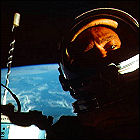 The final mission of NASA’s Gemini program, Gemini 12 lifts off with Jim Lovell and “Buzz” Aldrin aboard. Over their three-day flight, the last two-man American astronaut crew until the early Space Shuttle flights finally demonstrates improved spacewalk techniques, with handholds having been added to the Gemini capsule’s exterior, and pre-launch training conducted underwater in weighted spacesuits. Aldrin performs a two-hour spacewalk without overexerting himself, a first for the American space program. Gemini 12 splashes down, having accomplished all of the Gemini program goals mere weeks ahead of the first launch window for Apollo 1.
The final mission of NASA’s Gemini program, Gemini 12 lifts off with Jim Lovell and “Buzz” Aldrin aboard. Over their three-day flight, the last two-man American astronaut crew until the early Space Shuttle flights finally demonstrates improved spacewalk techniques, with handholds having been added to the Gemini capsule’s exterior, and pre-launch training conducted underwater in weighted spacesuits. Aldrin performs a two-hour spacewalk without overexerting himself, a first for the American space program. Gemini 12 splashes down, having accomplished all of the Gemini program goals mere weeks ahead of the first launch window for Apollo 1.
Gemini 11
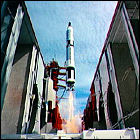 Gemini 11 lifts off on a three-day mission to continue validating rendezvous, docking and spacewalking techniques that will be needed on the upcoming Apollo lunar missions. With Pete Conrad and Dick Gordon aboard, Gemini 11 becomes the furthest manned object from Earth, using an Agena booster to push itself into a higher orbit that takes Gemini 850 miles away from Earth at its furthest point. After three days of docking, spacewalks and orbit-changing exercises, Gemini 11 returns to Earth.
Gemini 11 lifts off on a three-day mission to continue validating rendezvous, docking and spacewalking techniques that will be needed on the upcoming Apollo lunar missions. With Pete Conrad and Dick Gordon aboard, Gemini 11 becomes the furthest manned object from Earth, using an Agena booster to push itself into a higher orbit that takes Gemini 850 miles away from Earth at its furthest point. After three days of docking, spacewalks and orbit-changing exercises, Gemini 11 returns to Earth.
Gemini 10
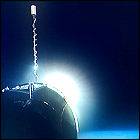 With the docking and EVA goals of the Gemini program still unmet, and with the first Apollo missions looming ahead in the mission schedule, Gemini 10 lifts off with a lot riding on it (in addition to astronauts John Young and Michael Collins). Over the course of nearly three days, the Gemini 10 crew makes up for lost time, successfully docking with an Agena booster and changing the vehicle’s orbital altitude to 188 miles – a new distance-from-Earth record for a manned spacecraft. Collins conducts two spacewalks, but the lack of handgrips on the exterior of the Gemini capsule frustrates his efforts. Gemini 10 returns after three days in space.
With the docking and EVA goals of the Gemini program still unmet, and with the first Apollo missions looming ahead in the mission schedule, Gemini 10 lifts off with a lot riding on it (in addition to astronauts John Young and Michael Collins). Over the course of nearly three days, the Gemini 10 crew makes up for lost time, successfully docking with an Agena booster and changing the vehicle’s orbital altitude to 188 miles – a new distance-from-Earth record for a manned spacecraft. Collins conducts two spacewalks, but the lack of handgrips on the exterior of the Gemini capsule frustrates his efforts. Gemini 10 returns after three days in space.
Gemini 9
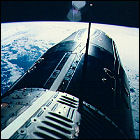 Gemini 9 lifts off on a three-day mission to complete the still unfulfilled docking objectives of the Gemini program. The flight has already seen significant problems, not the least of which is the death of the originally-assigned crew, Elliott See and Charles Bassett, in an accident involving T-38 training jets. The backup crew, Thomas Stafford and Gene Cernan, fly Gemini 9 instead, but find that their rendezvous/docking target is still trapped in the aerodynamic shroud that protected it during launch (the shroud would normally have been jettisoned). Furthermore, a spacewalk has been written into the mission plan, requiring Cernan to leave Gemini and go to the rear of the vehicle to unstow and test a “jetpack” (an early prototype of the Manned Maneuvering Unit that will finally see use in the space shuttle program in the 1980s). The spacewalk becomes a two-hour ordeal which leaves Cernan exhausted, thanks to the lack of handholds on the exterior of the Gemini capsule. The flight ends after three days in space.
Gemini 9 lifts off on a three-day mission to complete the still unfulfilled docking objectives of the Gemini program. The flight has already seen significant problems, not the least of which is the death of the originally-assigned crew, Elliott See and Charles Bassett, in an accident involving T-38 training jets. The backup crew, Thomas Stafford and Gene Cernan, fly Gemini 9 instead, but find that their rendezvous/docking target is still trapped in the aerodynamic shroud that protected it during launch (the shroud would normally have been jettisoned). Furthermore, a spacewalk has been written into the mission plan, requiring Cernan to leave Gemini and go to the rear of the vehicle to unstow and test a “jetpack” (an early prototype of the Manned Maneuvering Unit that will finally see use in the space shuttle program in the 1980s). The spacewalk becomes a two-hour ordeal which leaves Cernan exhausted, thanks to the lack of handholds on the exterior of the Gemini capsule. The flight ends after three days in space.
Gemini 8: spinning out of control
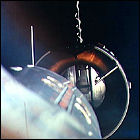 Gemini 8, carrying David Scott and Neil Armstrong, lifts off on a mission to fulfill the Agena booster rendezvous and docking goal originally assigned to Gemini 6. After docking with the Agena vehicle a few hours into the flight, Gemini 8 begins an unplanned, uncontrolled roll, and the crew initially believe it to be an issue with the Agena. But after undocking from the Agena, the Gemini capsule spins even faster out of control until Armstrong, using maneuvering thrusters reserved for reentry, cancels out the roll. Mission rules require an immediate return to Earth, and the astronauts splash down safely, barely 11 hours after liftoff.
Gemini 8, carrying David Scott and Neil Armstrong, lifts off on a mission to fulfill the Agena booster rendezvous and docking goal originally assigned to Gemini 6. After docking with the Agena vehicle a few hours into the flight, Gemini 8 begins an unplanned, uncontrolled roll, and the crew initially believe it to be an issue with the Agena. But after undocking from the Agena, the Gemini capsule spins even faster out of control until Armstrong, using maneuvering thrusters reserved for reentry, cancels out the roll. Mission rules require an immediate return to Earth, and the astronauts splash down safely, barely 11 hours after liftoff.
Gemini 6
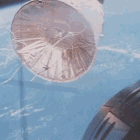 Delayed from its original launch date in October, Gemini 6 had been intended to be the first American space docking mission. An unmanned Agena rocket, launched ahead of Gemini 6 to serve as its docking target, had exploded during liftoff, and the October Gemini 6 mission had been scrubbed as a result. Instead, the crew of Gemini 6 – Wally Schirra and Thomas Stafford – are launched on a one-day mission to become the rendezvous target for the already-launched Gemini 7. The two manned vehicles close to within mere feet of each other – a first for human spaceflight.
Delayed from its original launch date in October, Gemini 6 had been intended to be the first American space docking mission. An unmanned Agena rocket, launched ahead of Gemini 6 to serve as its docking target, had exploded during liftoff, and the October Gemini 6 mission had been scrubbed as a result. Instead, the crew of Gemini 6 – Wally Schirra and Thomas Stafford – are launched on a one-day mission to become the rendezvous target for the already-launched Gemini 7. The two manned vehicles close to within mere feet of each other – a first for human spaceflight.
Gemini 7
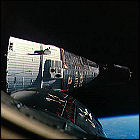 Gemini 7 is launched with Frank Borman and Jim Lovell aboard, on a grueling two-week endurance mission which also sees the first manned space rendezvous. The 14-day flight sets a new space endurance record that stands for five years – none of the lunar landing missions will last that long – and the astronauts function well throughout the flight, though some of Gemini 7’s systems begin to fray at the edges toward the end of the mission. Eleven days into Gemini 7’s flight, Gemini 6 is launched on a one-day mission to act as the rendezvous target, and the two manned vehicles close to within mere feet of each other – a first for human spaceflight.
Gemini 7 is launched with Frank Borman and Jim Lovell aboard, on a grueling two-week endurance mission which also sees the first manned space rendezvous. The 14-day flight sets a new space endurance record that stands for five years – none of the lunar landing missions will last that long – and the astronauts function well throughout the flight, though some of Gemini 7’s systems begin to fray at the edges toward the end of the mission. Eleven days into Gemini 7’s flight, Gemini 6 is launched on a one-day mission to act as the rendezvous target, and the two manned vehicles close to within mere feet of each other – a first for human spaceflight.
Gemini 5
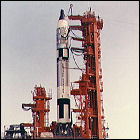 Gemini 5 lifts off on the first manned spaceflight to last over a week, breaking the previous record held by the Soviet crew of Vostok 5; the eight-day flight is crucial in proving that humans could function for the minimum amount of time that a flight to the moon and back again would take. Instead of short-lived batteries, Gemini 5 is the first American spacecraft powered by fuel cells, another important step toward longer flights to the moon. The crew consists of Gordon Cooper and Pete Conrad.
Gemini 5 lifts off on the first manned spaceflight to last over a week, breaking the previous record held by the Soviet crew of Vostok 5; the eight-day flight is crucial in proving that humans could function for the minimum amount of time that a flight to the moon and back again would take. Instead of short-lived batteries, Gemini 5 is the first American spacecraft powered by fuel cells, another important step toward longer flights to the moon. The crew consists of Gordon Cooper and Pete Conrad.
Gemini 4
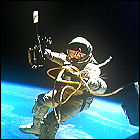 The second manned Gemini flight, Gemini 4, lifts off with Jim McDivitt and Ed White aboard for a four-day mission. Four hours into the flight, White becomes the first American spacewalker, controlling his movement with a handheld device with small jets allowing him to change his own orientation, though he is tethered to the Gemini capsule at all times. This is the first NASA flight overseen from the new Manned Space Center constructed in Houston, Texas, and the first to be broadcast live worldwide.
The second manned Gemini flight, Gemini 4, lifts off with Jim McDivitt and Ed White aboard for a four-day mission. Four hours into the flight, White becomes the first American spacewalker, controlling his movement with a handheld device with small jets allowing him to change his own orientation, though he is tethered to the Gemini capsule at all times. This is the first NASA flight overseen from the new Manned Space Center constructed in Houston, Texas, and the first to be broadcast live worldwide.
Vehicle Assembly Building open for business
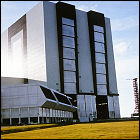 NASA’s massive Vehicle Assembly Building is completed at the spaceport rapidly taking shape on Cape Canaveral ahead of the Apollo lunar missions. Topped off at a total cost of $117,000,000, the VAB is where Saturn V rockets are assembled for the Apollo moonshots, and the huge, eight-acre building will later transition to the assembly of the Space Shuttle launch system elements and the Space Launch System boosters for the 21st century Orion program.
NASA’s massive Vehicle Assembly Building is completed at the spaceport rapidly taking shape on Cape Canaveral ahead of the Apollo lunar missions. Topped off at a total cost of $117,000,000, the VAB is where Saturn V rockets are assembled for the Apollo moonshots, and the huge, eight-acre building will later transition to the assembly of the Space Shuttle launch system elements and the Space Launch System boosters for the 21st century Orion program.
Gemini 3
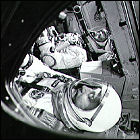 The first two-man American space crew lifts off in the first manned flight of NASA’s Gemini program. With a larger, more maneuverable spacecraft designed for longer stays in space, Gemini is intended to be a stepping stone on the path to the first lunar landing, allowing astronauts to practice rendezvous, docking, and orbital changes. Aboard the Gemini capsule are Mercury veteran Gus Grissom and rookie John Young; the capsule is unofficially nicknamed “Molly Brown” (a reference to Grissom’s sunken Mercury capsule). The flight lasts barely five hours and includes the first-ever orbital attitude changed made by a manned spacecraft.
The first two-man American space crew lifts off in the first manned flight of NASA’s Gemini program. With a larger, more maneuverable spacecraft designed for longer stays in space, Gemini is intended to be a stepping stone on the path to the first lunar landing, allowing astronauts to practice rendezvous, docking, and orbital changes. Aboard the Gemini capsule are Mercury veteran Gus Grissom and rookie John Young; the capsule is unofficially nicknamed “Molly Brown” (a reference to Grissom’s sunken Mercury capsule). The flight lasts barely five hours and includes the first-ever orbital attitude changed made by a manned spacecraft.
Voskhod 2: the first spacewalk
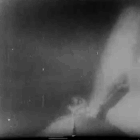 Voskhod 2 is launched by the Soviet Union, this time with only a two-man crew for a very specific mission. Cosmonauts Pavel Belyaev and Alexei Leonov orbit Earth for 28 hours, but during one orbit an airlock is extended from the side of their Voskhod capsule and Leonov squeezes through the airlock tunnel in a spacesuit, becoming the first human being to exit his spacecraft in flight. He spends 10 minutes walking in space, but this Soviet space first nearly ends badly; Leonov’s suit “inflates” as a result of pressurization, making it extremely difficult to enter the vehicle again (and nearly overexerting him in the process of getting back inside). A guidance system malfunction forces Belyaev to manually control the vehicle during reentry and descent, but Voskhod 2’s crew capsule lands over 700 miles away from Moscow in a remote wilderness in the dead of winter, and the cosmonauts wait hours for a recovery team to rescue them via helicopter.
Voskhod 2 is launched by the Soviet Union, this time with only a two-man crew for a very specific mission. Cosmonauts Pavel Belyaev and Alexei Leonov orbit Earth for 28 hours, but during one orbit an airlock is extended from the side of their Voskhod capsule and Leonov squeezes through the airlock tunnel in a spacesuit, becoming the first human being to exit his spacecraft in flight. He spends 10 minutes walking in space, but this Soviet space first nearly ends badly; Leonov’s suit “inflates” as a result of pressurization, making it extremely difficult to enter the vehicle again (and nearly overexerting him in the process of getting back inside). A guidance system malfunction forces Belyaev to manually control the vehicle during reentry and descent, but Voskhod 2’s crew capsule lands over 700 miles away from Moscow in a remote wilderness in the dead of winter, and the cosmonauts wait hours for a recovery team to rescue them via helicopter.
Voskhod 1: three men in space
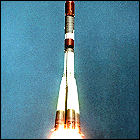 The Soviet Union launches the first of its next-generation manned spacecraft, the roomier Voskhod 1 capsule. Cosmonauts Dr. Boris Yegorov, Dr. Konstantin Feoktistov and Vladimir Komarov become the first three-man crew in space, though they find that the larger vehicle is still cramped for a crew of that size; the tight fit makes no allowances for spacesuits, which also makes the Voskhod 1 crew the first “shirtsleeves” space flight. Voskhod 1 spends just over one day in orbit before reentering the atmosphere; for the first time, the crew lands inside the capsule, rather than ejecting and parachuting down after reentry.
The Soviet Union launches the first of its next-generation manned spacecraft, the roomier Voskhod 1 capsule. Cosmonauts Dr. Boris Yegorov, Dr. Konstantin Feoktistov and Vladimir Komarov become the first three-man crew in space, though they find that the larger vehicle is still cramped for a crew of that size; the tight fit makes no allowances for spacesuits, which also makes the Voskhod 1 crew the first “shirtsleeves” space flight. Voskhod 1 spends just over one day in orbit before reentering the atmosphere; for the first time, the crew lands inside the capsule, rather than ejecting and parachuting down after reentry.
Project Orion: lunar and Mars missions studied
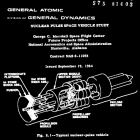 A report prepared by the Future Projects Office of NASA’s Marshall Spaceflight Center and General Atomic, the nuclear power division of General Dynamics, outlines in great detail ways that existing rocket technology (namely the Saturn V, which will not fly until 1967) and theoretical nuclear pulse propulsion technology could be combined to facilitate exploration of the moon and Mars. (Though derived from the Project Orion studies of the late 1950s, the potential nuclear-powered NASA program suggested in this document is not referred to as Orion.) The report, over 174 pages, goes into great detail about crew module design, radiation exposure, ways to mitigate the inevitable ablation of the “pusher plate” at the rear of the vehicle that will absorb a series of nuclear explosions at close range and translate the energy released into forward thrust, and even possible catastrophic launch abort modes, many of which would qualify as at least a small nuclear disaster. Even the health effects on civilian onlookers of a successful launch are considered, from retinal damage caused by viewing high-altitude firings of the nuclear propellant explosions to fallout risks, as well as potential collateral damage to satellites and non-hardened computers resulting from repeated electromagnetic pulses. The mission profiles considered are constrained to lunar missions and missions to Mars. (It’s worth noting that, by the time of this report’s issuance, the Nuclear Test Ban Treaty has been ratified by both the U.S. and the U.S.S.R., making it illegal to put nuclear pulse propulsion into practice.)
A report prepared by the Future Projects Office of NASA’s Marshall Spaceflight Center and General Atomic, the nuclear power division of General Dynamics, outlines in great detail ways that existing rocket technology (namely the Saturn V, which will not fly until 1967) and theoretical nuclear pulse propulsion technology could be combined to facilitate exploration of the moon and Mars. (Though derived from the Project Orion studies of the late 1950s, the potential nuclear-powered NASA program suggested in this document is not referred to as Orion.) The report, over 174 pages, goes into great detail about crew module design, radiation exposure, ways to mitigate the inevitable ablation of the “pusher plate” at the rear of the vehicle that will absorb a series of nuclear explosions at close range and translate the energy released into forward thrust, and even possible catastrophic launch abort modes, many of which would qualify as at least a small nuclear disaster. Even the health effects on civilian onlookers of a successful launch are considered, from retinal damage caused by viewing high-altitude firings of the nuclear propellant explosions to fallout risks, as well as potential collateral damage to satellites and non-hardened computers resulting from repeated electromagnetic pulses. The mission profiles considered are constrained to lunar missions and missions to Mars. (It’s worth noting that, by the time of this report’s issuance, the Nuclear Test Ban Treaty has been ratified by both the U.S. and the U.S.S.R., making it illegal to put nuclear pulse propulsion into practice.)
Manned Orbiting Laboratory
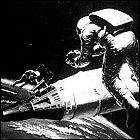 The Air Force announces the Manned Orbiting Laboratory project, a joint venture with NASA to orbit a space station using modified Gemini capsules to launch specially selected Air Force crews for month-long stays in orbit. What isn’t revealed – but isn’t too hard to figure out – is that MOL’s mission is largely military, including orbital reconaissance: the station will essentially be a manned spy satellite. The Soviet Union responds by beginning to draw up plans for its own manned military space station, Almaz.
The Air Force announces the Manned Orbiting Laboratory project, a joint venture with NASA to orbit a space station using modified Gemini capsules to launch specially selected Air Force crews for month-long stays in orbit. What isn’t revealed – but isn’t too hard to figure out – is that MOL’s mission is largely military, including orbital reconaissance: the station will essentially be a manned spy satellite. The Soviet Union responds by beginning to draw up plans for its own manned military space station, Almaz.
The Vehicle Assembly Building
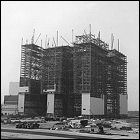 Construction commences on NASA’s massive Vehicle Assembly Building (originally named the Vertical Assembly Building), where the giant Saturn V rockets for Apollo lunar missions will be constructed, tested, and then rolled out to the launch pad atop huge mobile crawlers. Covering eight acres of land on Merritt Island, Florida, the building must withstand Florida’s notorious hurricane seasons (and protect any rockets under construction within) as well as the shockwaves of Saturn V rocket launches taking place only three miles away; special ventilation and humidity control systems have to be built as well, as the interior space is so voluminous that the building has its own internal weather! The VAB will later transition to the assembly of the Space Shuttle launch system elements and the Space Launch System boosters for the 21st century Orion program.
Construction commences on NASA’s massive Vehicle Assembly Building (originally named the Vertical Assembly Building), where the giant Saturn V rockets for Apollo lunar missions will be constructed, tested, and then rolled out to the launch pad atop huge mobile crawlers. Covering eight acres of land on Merritt Island, Florida, the building must withstand Florida’s notorious hurricane seasons (and protect any rockets under construction within) as well as the shockwaves of Saturn V rocket launches taking place only three miles away; special ventilation and humidity control systems have to be built as well, as the interior space is so voluminous that the building has its own internal weather! The VAB will later transition to the assembly of the Space Shuttle launch system elements and the Space Launch System boosters for the 21st century Orion program.
Vostok 6: first woman in space
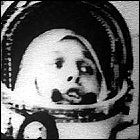 While cosmonaut Valery Bykovsky orbits overhead about Vostok 5, Vostok 6 is launched from the Soviet Union, carrying the first female space traveler, cosmonaut Valentina Tereshkova. Spending nearly three days in orbit, Tereshkova’s Vostok capsule serves as a rendezvous target for Vostok 5, though without precision piloting ability, the two vehicles’ closest approach is no closer than within three miles, and neither Vostok is actually equipped for any kind of docking. Tereshkova’s flight is a political point scored for the Soviet Union, but only a brief victory for womankind: it will be two more decades before another woman flies in space. The glass ceiling remains firmly in orbit.
While cosmonaut Valery Bykovsky orbits overhead about Vostok 5, Vostok 6 is launched from the Soviet Union, carrying the first female space traveler, cosmonaut Valentina Tereshkova. Spending nearly three days in orbit, Tereshkova’s Vostok capsule serves as a rendezvous target for Vostok 5, though without precision piloting ability, the two vehicles’ closest approach is no closer than within three miles, and neither Vostok is actually equipped for any kind of docking. Tereshkova’s flight is a political point scored for the Soviet Union, but only a brief victory for womankind: it will be two more decades before another woman flies in space. The glass ceiling remains firmly in orbit.
Vostok 5
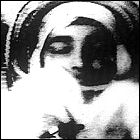 The Soviet Union launches the Vostok 5 mission to orbit Earth, carrying cosmonaut Valery Bykovsky aboard. He remains in orbit for over four days, traveling over 2,000,000 miles in Earth orbit. As he flies over the Soviet Union, a second Vostok capsule is launched in the USSR’s first bid to trump the United States by mounting the first manned space rendezvous.
The Soviet Union launches the Vostok 5 mission to orbit Earth, carrying cosmonaut Valery Bykovsky aboard. He remains in orbit for over four days, traveling over 2,000,000 miles in Earth orbit. As he flies over the Soviet Union, a second Vostok capsule is launched in the USSR’s first bid to trump the United States by mounting the first manned space rendezvous.
Mercury 9
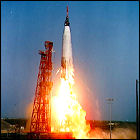 The final manned Mercury flight, Mercury 9 (nicknamed Faith 7) puts astronaut Gordon Cooper in orbit for over a day. Over the course of 34 hours, Cooper circles Earth 22 times, performing small-scale experiments and photography tasks. With Mercury astronaut Deke Slayton grounded due to health issues, only six of the Mercury seven have flown. Development of a two-seater descendant of the Mercury design (initially called “Big Mercury” but now known as Gemini) is well underway, along with the development of the Apollo spacecraft that will succeed Gemini and take men to the moon. Cooper is the last solo American space pilot until Mike Melvill flies the experimental SpaceShip One into suborbital space in the 21st century.
The final manned Mercury flight, Mercury 9 (nicknamed Faith 7) puts astronaut Gordon Cooper in orbit for over a day. Over the course of 34 hours, Cooper circles Earth 22 times, performing small-scale experiments and photography tasks. With Mercury astronaut Deke Slayton grounded due to health issues, only six of the Mercury seven have flown. Development of a two-seater descendant of the Mercury design (initially called “Big Mercury” but now known as Gemini) is well underway, along with the development of the Apollo spacecraft that will succeed Gemini and take men to the moon. Cooper is the last solo American space pilot until Mike Melvill flies the experimental SpaceShip One into suborbital space in the 21st century.